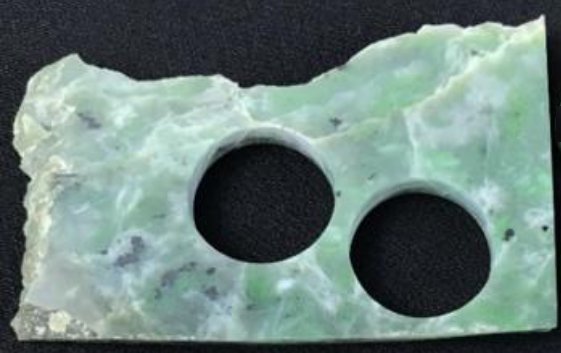Nephrite
Jade from
Washington State, USA, Showing Optical Phenomena
Jutras
JP1, Williams C2, Williams B2,
Rossman GR3
1Jade
Leader Corp.
2Stone Group Labs
3Division of Geological and Planetary Sciences
Calgary, Alberta T2P 3E8,
Canada
Jefferson City, Missouri
65110-4504
Calfironia Institute of Technology, Pasadena, CA 9 1125
Abstract
This article introduces a new nephrite jade type from Washington State
(USA) that exhibits subtle to spectacular directional color variations
in both daylight and artificial light, an optical phenomena not
previously documented in the jade literature. Analytical studies
performed on the material include EDXRF analysis, Raman spectrometry,
thin section work and SEM/EDS characterization. These confirm that its
mineralogical and gemological properties are consistent with that
published for nephrite jades from other locations and indicate that the
unique color-shift optical phenomenon are related to the underlying
architecture of the tremolite fiber constituents of the jade. These
show high angle to orthogonal cross-felting of numerous generations of
fibres, often with varying underlying chemistry. The high translucency
of the stone and relatively coarse tremolite fibres allows the
pleochroism associated with monoclinic tremolite crystals to be
revealed. In common jades, both the minute size and random orientation
of constituent tremolite fibres diffuse light, and do not channel it.
Cutting has shown that the stone has the toughness required to be cut
into cabochons or carved without any treatment, passing the workability
test as a true, yet new and unique jade type.


